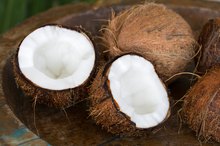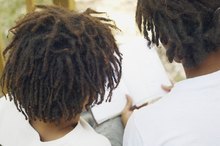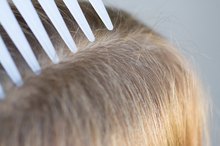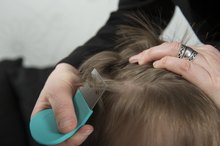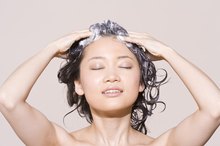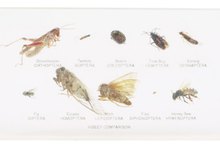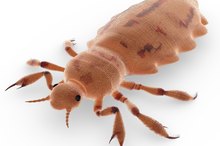What does fact checked mean?
At Healthfully, we strive to deliver objective content that is accurate and up-to-date. Our team periodically reviews articles in order to ensure content quality. The sources cited below consist of evidence from peer-reviewed journals, prominent medical organizations, academic associations, and government data.
The information contained on this site is for informational purposes only, and should not be used as a substitute for the advice of a professional health care provider. Please check with the appropriate physician regarding health questions and concerns. Although we strive to deliver accurate and up-to-date information, no guarantee to that effect is made.
Lice Treatment for Breastfeeding Moms
Having head lice in your household can be stressful. All the laundry, nit picking, shampooing, bagging up items that cannot be washed, washing hair brushes, and vacuuming can take up a ton of time and money.
If you are breastfeeding, you may wonder what is safe to use on your own hair. Many ingredients and chemicals can pass into breast milk.
Identification
Head lice are also known as pediculosis.
According to th Dr. Sears website, adult lice lay eggs close to the scalp, these take about a week to hatch 1. After they hatch, they are called nymphs and are lighter in color. In about three weeks the lice will be ready to lay eggs, also known as nits. Head lice need the warm scalp to hatch, blood to suck, and can only live away from a body for about two days. Some common signs of infestation include an itchy scalp, visible nymphs and lice, and nits. Lice are transmitted by person-to-person contact or from items such as a hat, scarf, or brush. Lice cannot be transmitted from animal to human and it is also unlikely to get lice just from being in the same room as someone who has lice.
- Head lice are also known as pediculosis.
- In about three weeks the lice will be ready to lay eggs, also known as nits.
Permethrin
Coconut Oil and Head Lice
Learn More
LactMed suggests that permethrin is the Centers for Disease Control's option of choice for treatment of head lice 2. Permethrin kills lice and their eggs.
Two percent of permethrin is absorbed through the skin and is generally thought of as safe to apply to infants.
In a study done on lactating women in Africa who were exposed to crop powdering, permethrin was found in their breast milk but all were below allowable amounts.
There have not been many studies done on the effects on breastfeeding children. No adverse reactions have been reported. Follow the directions of the product to ensure proper use.
- LactMed suggests that permethrin is the Centers for Disease Control's option of choice for treatment of head lice 2.
- In a study done on lactating women in Africa who were exposed to crop powdering, permethrin was found in their breast milk but all were below allowable amounts.
Pyrethrin / Pyrethrum
LactMed states the same results for pyrethrin use on lactating women as for permethrin 2. This is because they are both pyrethroids. Dr. Sears notes that pyrethrin is derived from chrysanthemums and affects lice only, and not their eggs 1. Most pyrethrin shampoos come with an egg rinse and removal comb. You will need to repeat the treatment in seven to 10 days to take care of any newly hatched lice from the nits you may have missed.
Do not use pyrethrin based products if you are allergic to plants from the ragweed family. Make sure you follow the product's directions.
- LactMed states the same results for pyrethrin use on lactating women as for permethrin 2.
- Do not use pyrethrin based products if you are allergic to plants from the ragweed family.
Anise
Lice and Dreadlocks
Learn More
The Natural Medicines Comprehensive Database states that a study showed a topical spray of anise, coconut oil and ylang ylang oil to be as effective at treating lice as products containing permethrin 3. More evidence is needed to verify the results as well as establish it safe for use during lactation.
Anise is considered safe for children and during lactation in regular food consumption, although topical application is necessary for head lice treatment. In some people, topical application of products with anise can cause a rash or skin irritation.
- The Natural Medicines Comprehensive Database states that a study showed a topical spray of anise, coconut oil and ylang ylang oil to be as effective at treating lice as products containing permethrin 3.
Non-Pesticide Treatments
Massage olive oil, mayonnaise or petroleum jelly through the hair and scalp, put a shower cap on and let it sit overnight.
Rinse in the morning, but this method may take many rinses to remove the oil from the hair.
Dr. Sears says this method works by suffocating the lice and eggs 1. Some people may prefer to start with a method such as this, and then move through stronger treatments. This method would be considered safe for pregnant and lactating mothers, unless there is an allergy to an ingredient.
Dr. Sears states that dimethicone is also a non-pesticide method of lice removal 1. The dimethicone acts as a lubricant, making it easier to remove nits and lice from curly, thick, and long hair.
Since this method is pesticide free, there is no worry about lice resistance. It is important to remove all the lice and nits with the removal comb. Dimethicone is odorless, non irritating, and hypoallergenic.
No records were found in LactMed or in the Natural Medicines Comprehensive Database under dimethicone or licemd, the trade name 23. Consult your health care provider or lactation consultant to see if this product is the right choice for you while lactating.
- Massage olive oil, mayonnaise or petroleum jelly through the hair and scalp, put a shower cap on and let it sit overnight.
- This method would be considered safe for pregnant and lactating mothers, unless there is an allergy to an ingredient.
Recurrence Prevention
Make sure to follow the directions for the treatment you choose to use, including repeating the application win the recommended amount of time and removing all nits. Wash and dry all clothing or bedding used within the past couple of days. Bag all items in plastic that cannot be washed and store them for about two weeks. Vacuum furniture, pillows and mattresses to get rid of any stray lice.
Make sure to check and treat everyone in the house or close contacts that have lice or eggs. Check hair every two to three days for lice or nits to help to prevent another infestation.
- Make sure to follow the directions for the treatment you choose to use, including repeating the application win the recommended amount of time and removing all nits.
- Make sure to check and treat everyone in the house or close contacts that have lice or eggs.
Considerations
Lindane should be avoided. According to LactMed, it persists in breast milk for days, can decrease milk supply, and negatively affect infants 2. Dr. Sears says to also avoid malathion, and to use malathion and lindane only as last resorts. Many places such as schools have a no-nit policy. Even if the treatment you choose kills the eggs, you will need to remove them all from the hair.
- Lindane should be avoided.
- Even if the treatment you choose kills the eggs, you will need to remove them all from the hair.
Related Articles
References
- Ask Dr Sears: "Head Lice"
- LactMed: "Lice"
- Natural Medicines Comprehensive Database: Anise
- Meister L, Ochsendorf F. Head Lice: Epidemiology, Biology, Diagnosis, and Treatment. Deutsches Ärzteblatt International. 2016;113(45):763-772. doi:10.3238/arztebl.2016.0763
- Centers for Disease Control and Prevention. Head Lice: Frequently Asked Questions (FAQs). Updated July 17, 2019.
- Devore CD, Schutze GE. Head Lice. Pediatrics. 2015;135(5). doi:10.1542/peds.2015-0746
- Barker SC, Altman PM. A Randomised, Assessor Blind, Parallel Group Comparative Efficacy Trial of Three Products for the Treatment of Head Lice in Children--Melaleuca Oil and Lavender Oil, Pyrethrins and Piperonyl Butoxide, and a "Suffocation" Product. BMC Dermatol. 2010 Aug 20;10:6. doi:10.1186/1471-5945-10-6
- Abdel-Ghaffar F, Al-Quraishy S, Al-Rasheid KA, Mehlhorn H. Efficacy of a Single Treatment of Head Lice With a Neem Seed Extract: An in Vivo and in Vitro Study on Nits and Motile Stages. Parasitol Res. Published June 11, 2011. doi:10.1007/s00436-011-2484-3
Writer Bio
Based in Southern California, Tamara Carpenito began her writing career in 2009 by blogging and providing instructional articles online. She writes about topics such as the environment, health, family and community issues. Carpenito holds a Bachelor of Science in environmental science from Humboldt State University and is a certified lactation educator counselor.
